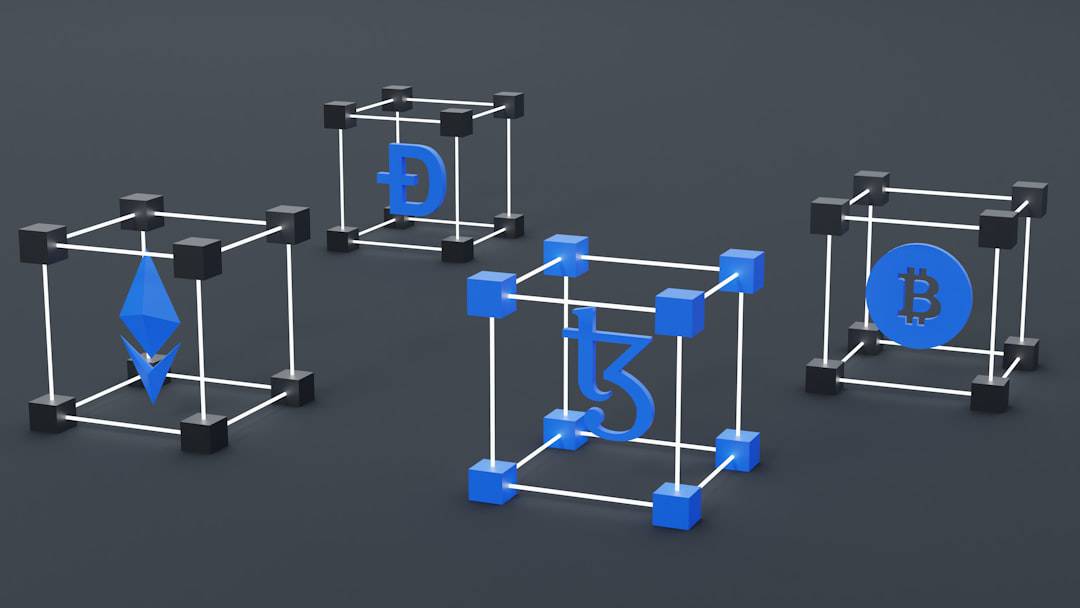Neural networks are a fundamental component of artificial intelligence (AI) and are designed to mimic the way the human brain processes information. They consist of interconnected nodes, or “neurons,” that work together to process and analyze complex data. These networks can learn from data, identify patterns, and make decisions based on the information they receive.
neural networks are a key technology in AI, enabling machines to perform tasks such as image and speech recognition, natural language processing, and autonomous decision-making. The structure of neural networks includes layers of interconnected nodes, each with a specific function in data processing and analysis. The input layer receives initial data, which passes through one or more hidden layers for processing and analysis.
The output layer then produces the result or decision based on the input data and the network’s learned patterns. This structure allows neural networks to adapt and learn from new information, making them powerful tools for AI applications. As technology advances, neural networks are becoming more sophisticated, enabling them to tackle increasingly complex tasks and make more accurate decisions.
Key Takeaways
- Neural networks are a key component of artificial intelligence, designed to mimic the human brain’s ability to learn and adapt.
- Neural networks play a crucial role in AI by processing complex data, recognizing patterns, and making decisions based on the information they receive.
- Neural networks learn and adapt through a process called training, where they are exposed to large amounts of data and adjust their internal parameters to improve their performance.
- Neural networks are used in various applications of AI, including image and speech recognition, natural language processing, and autonomous vehicles.
- Deep learning has unlocked the potential of neural networks by enabling them to process and understand large and complex datasets, leading to significant advancements in AI technology.
The Role of Neural Networks in AI
Neural networks play a crucial role in the development and advancement of AI. They are at the core of many AI applications, enabling machines to process and analyze large amounts of data, recognize patterns, and make decisions based on the information they receive. Neural networks are used in a wide range of industries, from healthcare and finance to transportation and entertainment, and are driving innovation and efficiency in these sectors.
In healthcare, for example, neural networks are being used to analyze medical images and diagnose diseases with a high degree of accuracy. In finance, they are being used to detect fraudulent transactions and make investment decisions based on market trends. One of the key advantages of neural networks in AI is their ability to learn and adapt from new information.
This capability allows machines to continuously improve their performance and make more accurate decisions over time. Neural networks are also capable of handling complex and unstructured data, such as images, audio, and text, making them versatile tools for a wide range of AI applications. As AI continues to evolve, neural networks will play an increasingly important role in driving innovation and solving complex problems across various industries.
How Neural Networks Learn and Adapt

Neural networks learn and adapt through a process known as training, where they are exposed to large amounts of data and learn to recognize patterns and make decisions based on that data. During the training process, the network’s parameters are adjusted based on the input data and the desired output, allowing it to learn from its mistakes and improve its performance over time. This process is often repeated multiple times until the network achieves a high level of accuracy in its predictions or decisions.
One common method used to train neural networks is supervised learning, where the network is provided with labeled data, meaning that the input data is paired with the correct output. The network then learns to make predictions based on this labeled data and adjusts its parameters to minimize errors in its predictions. Another method is unsupervised learning, where the network is given unlabeled data and must find patterns and structure within the data on its own.
This type of learning is often used for tasks such as clustering and dimensionality reduction.
Applications of Neural Networks in AI
| Application | Description |
|---|---|
| Image Recognition | Neural networks are used to identify and classify objects within images. |
| Natural Language Processing | Neural networks are used to understand and process human language, including speech recognition and language translation. |
| Recommendation Systems | Neural networks are used to analyze user preferences and provide personalized recommendations for products or content. |
| Medical Diagnosis | Neural networks are used to analyze medical images and data to assist in diagnosing diseases and conditions. |
| Financial Forecasting | Neural networks are used to analyze financial data and make predictions for stock prices, market trends, and risk assessment. |
Neural networks have a wide range of applications in AI, spanning across various industries and sectors. In healthcare, they are being used for medical image analysis, disease diagnosis, drug discovery, and personalized medicine. In finance, they are being used for fraud detection, risk assessment, algorithmic trading, and customer service automation.
In transportation, they are being used for autonomous vehicles, traffic management, route optimization, and predictive maintenance. In entertainment, they are being used for content recommendation, personalized advertising, gaming, and virtual reality experiences. One of the most well-known applications of neural networks in AI is in natural language processing (NLP), where they are used for speech recognition, language translation, sentiment analysis, chatbots, and text generation.
Neural networks are also being used for image recognition tasks such as object detection, facial recognition, image classification, and video analysis. As technology continues to advance, neural networks will continue to find new and innovative applications in AI across various industries.
Unlocking the Potential of Deep Learning in Neural Networks
Deep learning is a subset of machine learning that uses neural networks with multiple hidden layers to process and analyze data. This approach allows neural networks to learn from complex and unstructured data with a high degree of accuracy, making them well-suited for a wide range of AI applications. Deep learning has unlocked new potential for neural networks by enabling them to tackle more complex tasks such as natural language understanding, image recognition, and decision-making.
One of the key advantages of deep learning in neural networks is its ability to automatically extract features from raw data without the need for manual feature engineering. This allows deep learning models to handle large amounts of unstructured data such as images, audio, and text with minimal human intervention. Deep learning has also led to significant advancements in AI research and development, driving innovation in areas such as computer vision, speech recognition, and autonomous systems.
The Future of Neural Networks and AI

The future of neural networks and AI is filled with exciting possibilities as technology continues to advance at a rapid pace. Neural networks will continue to play a central role in driving innovation across various industries, enabling machines to perform increasingly complex tasks with a high degree of accuracy. As neural networks become more sophisticated and powerful, they will be able to tackle new challenges in areas such as healthcare, finance, transportation, and entertainment.
One area that holds great promise for the future of neural networks is reinforcement learning, where machines learn to make decisions through trial and error in order to maximize a reward. This approach has the potential to enable machines to learn complex tasks such as playing video games or controlling autonomous vehicles with a high level of proficiency. Additionally, as technology continues to advance, neural networks will become more efficient and scalable, enabling them to handle larger amounts of data and make more accurate decisions in real-time.
Ethical Considerations in the Development of Neural Networks and AI
As neural networks continue to advance and play an increasingly important role in AI, it is crucial to consider the ethical implications of their development and use. One key consideration is the potential for bias in neural network models, which can lead to unfair or discriminatory outcomes in decision-making processes. It is important for developers to carefully consider the training data used to train neural networks in order to minimize bias and ensure fair outcomes.
Another ethical consideration is the potential impact of AI on the workforce and job displacement. As machines become increasingly capable of performing tasks that were once thought to be exclusively human, there is a risk that certain jobs may become obsolete. It is important for society to consider how to mitigate these potential impacts through retraining programs and policies that support workers who may be affected by automation.
In addition, there are ethical considerations surrounding privacy and data security when using neural networks for AI applications. It is important for developers to prioritize the protection of user data and ensure that it is used responsibly and ethically. As AI continues to evolve, it will be important for society to continue discussing these ethical considerations in order to ensure that neural networks are developed and used in a way that benefits humanity as a whole.
If you’re interested in the intersection of technology and the human brain, you may want to check out this interview with a leading neuroscientist discussing the potential impact of neural networks on our understanding of cognition and consciousness. This article delves into the exciting possibilities of using virtual reality and the metaverse to study and enhance the capabilities of neural networks. It’s a fascinating look at how these emerging technologies could revolutionize our understanding of the human brain.
FAQs
What is a neural net?
A neural net, short for neural network, is a computational model inspired by the structure and function of the human brain. It is composed of interconnected nodes, or “neurons,” that work together to process and analyze complex data.
How does a neural net work?
Neural nets use a system of interconnected nodes, or neurons, to process and analyze data. Each neuron receives input, processes it, and then passes the output to the next layer of neurons. Through this process, neural nets can learn to recognize patterns and make decisions based on the input data.
What are the applications of neural nets?
Neural nets have a wide range of applications, including image and speech recognition, natural language processing, medical diagnosis, financial forecasting, and autonomous vehicles. They are also used in various fields such as healthcare, finance, and manufacturing.
What are the different types of neural nets?
There are several types of neural nets, including feedforward neural networks, convolutional neural networks (CNNs), recurrent neural networks (RNNs), and deep learning neural networks. Each type has its own specific architecture and is suited for different types of tasks.
What are the advantages of using neural nets?
Neural nets have the ability to learn from data and make complex decisions, making them well-suited for tasks such as pattern recognition and classification. They can also handle large amounts of data and are capable of processing unstructured data, such as images and text.
What are the limitations of neural nets?
Neural nets require a large amount of data to train effectively, and they can be computationally intensive. They also have a tendency to be opaque, meaning it can be difficult to understand how they arrive at their decisions, which can be a concern in certain applications.











Leave a Reply